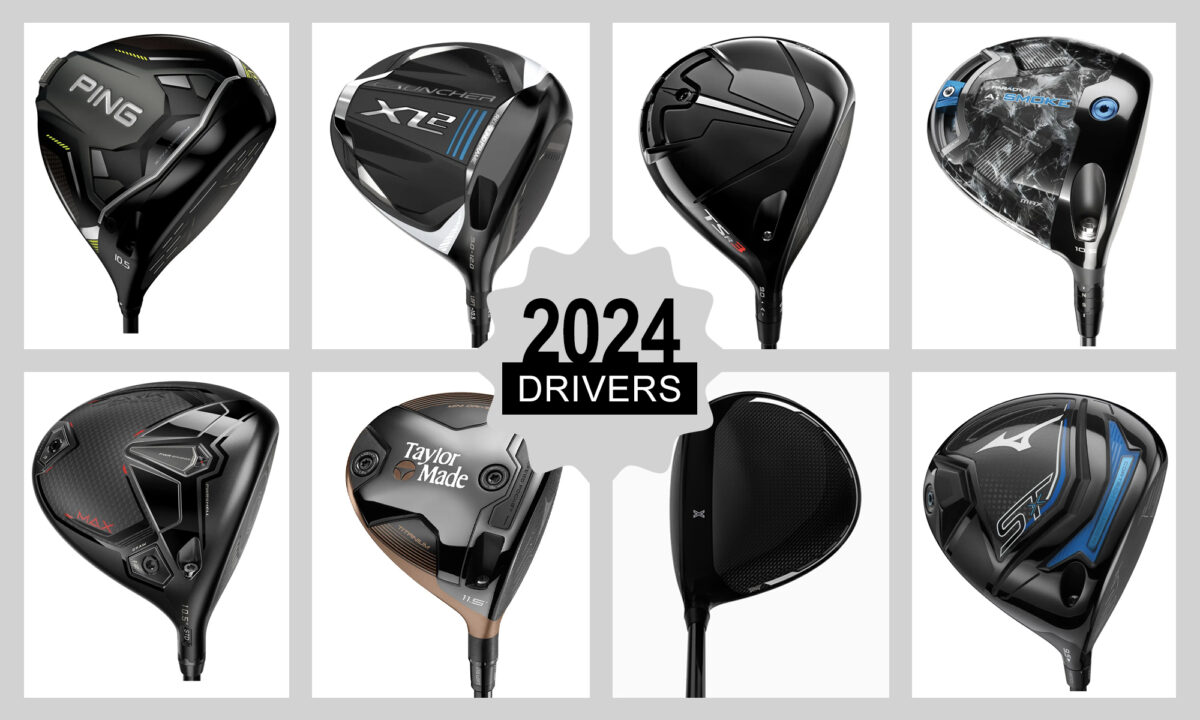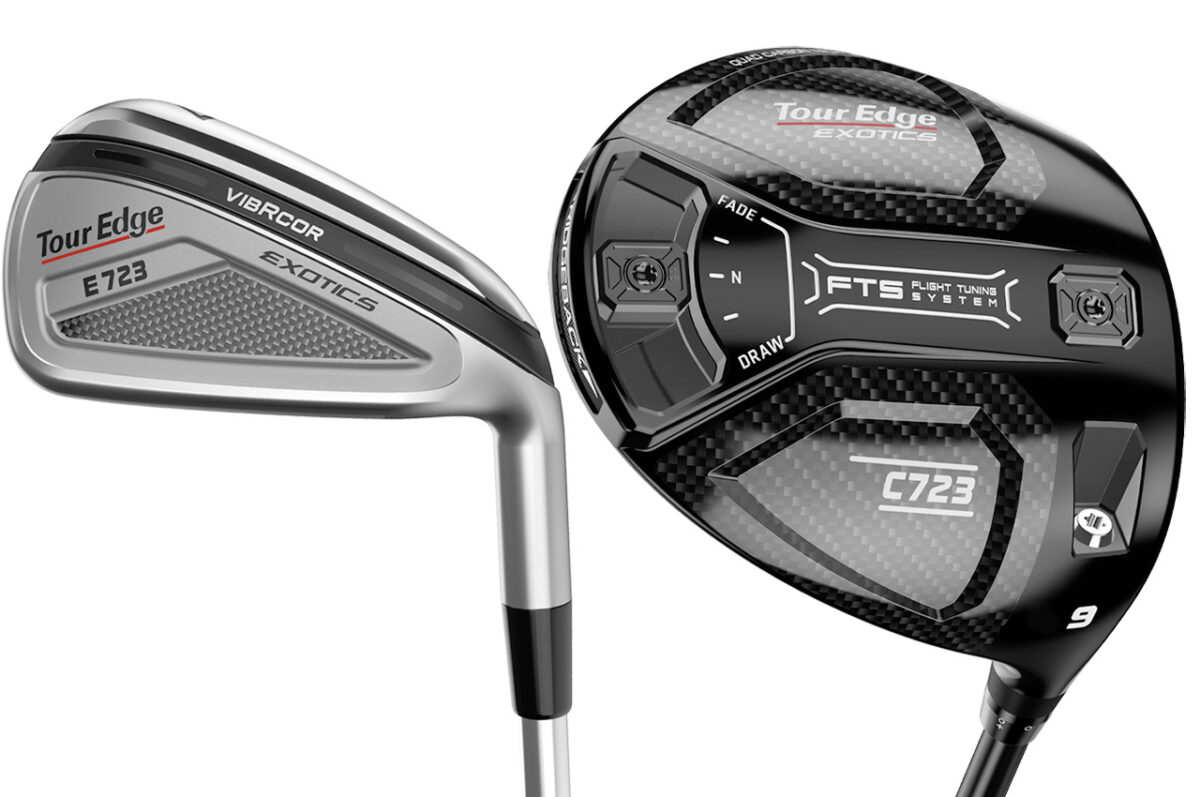Gear: Tour Edge Exotics E725, C725 drivers
Price: $399.99 with Project X Cypher or Denali Blue shaft and Golf Pride Tour Velvet grips
Specs: Titanium chassis and face with carbon fiber crown and adjustable hosel.
Available: October 15 (pre-order); November 1 (in-stores)
Who it’s for: Golfers who want to maximize forgiveness and stability (E725); Golfers who want a lower-spinning driver that offers more ball speed with enhanced stability.
What you should know: The Exotics E725 is the first driver from Tour Edge to eclipse the 10,000 total MOI mark, making it the most stable driver the brand has ever made. The C725 produces a lower flight and less spin, but it also boasts more stability.
The deep dive: Earlier this year, Tour Edge released an updated version of its Hot Launch wood lineup for budget-minded players who still want modern technologies and performance, but the Exotics family has always been where the Batavia, Illinois-based brand has showcased its most-advanced gear. With the drop of the Exotics E725 and C725, the Tour Edge is keeping that tradition intact.
The newest Exotics drivers are crafted with distinct player types in mind. As it has done in the past, Tour Edge has made the E driver for golfers who want extreme levels of forgiveness and stability, while the C driver is for competitive players who typically swing faster and need more spin reduction. However, the Exotics E725 and C725 drivers are built around shared technologies and a greater emphasis on forgiveness.

Enhanced Stability
Despite being tailored for different player types, the Exotics E725 and C725 share some core elements, but the most significant point of emphasis has been on increasing the moment of inertia (MOI) and boosting stability.
The E725, which has a volume of 460 cubic centimeters, has the higher MOI of the two drivers and is the first Tour Edge driver with a combined MOI above the 10,000 g-cm² threshold. That makes it more resistant to twisting on off-center hits, so shots should fly straighter.
To achieve that, Tour Edge created a weight system in the Exotics E725 it refers to as Flight Tuning. It’s an 18-gram weight that is in the trailing edge that can be shifted to a draw, neutral or fade position, but in every setting, it pulls the center of gravity (CG) location back and down, which elevates the MOI while also creating a shot-shaping bias.
The Exotics C725, which has a volume of 445 cubic centimeters, also has a Flight Tuning system, but it comes standard with a 10-gram weight that stays in a center-back location. It still boosts stability, in fact it MOI is five percent higher in the C725 than it was in the C723, which it replaces, but not as much as the Exotics E725. However, the combination of a smaller volume and a more forward CG location should help to produce a lower ball flight and less spin.

Other Shared Technologies
Both the Exotics E725 and C725 also feature 360-degree Ridgeback technology. the original Ridgeback system had a titanium beam that extended from the topline to the back of the chassis, and was flanked by carbon fiber panels. The new, updated version of Ridgeback has a supporting brace that encircles the crown, allowing it to be made with 22 percent more carbon fiber to save weight while maintaining strength.
Both drivers have also been made with an updated version of Tour Edge’s 3D Diamond Face technology. On the inner-facing side of the titanium face, Tour Edge has added 61 diamond-shaped areas of various thicknesses, and working together, they enlarge the sweet spot and protect ball speed on off-center hits.
E725 or C725: Which is right for you?
The best way to tell which driver is ideal for you is to hit both alongside a training fitter who has a launch monitor and then study the data.
That said, if you’re a golfer who values straight drives above all else or are someone who wants to minimize the impact of mis-hits, the Exotics E725’s high MOI and more forgiving design could make that club ideal for you.
For golfers who seek to shape shots and who prefer a more traditional driver profile, the C725 offers lower spin, more workability, and more forgiveness than many other control-oriented drivers.












